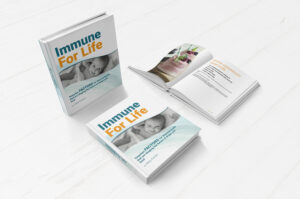Gut Health and Skin Connection: How Probiotics, Colostrum, and Whole Fat Milk Support a Healthy Glow
In recent years, growing research has shed light on the powerful relationship between gut health and skin appearance. More than just a passing trend, scientists are uncovering how the state of our digestive system directly affects the way our skin looks and feels. Practices like consuming fermented foods, incorporating prebiotics and probiotics, and adding nutrient-rich foods such as colostrum and whole fat mammal milk are proving to be valuable strategies for enhancing skin health from within.
The gut-skin axis is a term used to describe the communication network between the digestive system and the skin. When the gut is in balance—meaning it has a healthy mix of beneficial bacteria—it sends positive signals throughout the body, including to the skin. Probiotics, the “good” bacteria found in foods like yogurt, kefir, sauerkraut, and supplements, play a central role in this process. One fascinating discovery about probiotics is that they don’t just regulate digestion—they also manufacture important vitamins inside the body. For example, probiotics help produce B vitamins such as biotin, folate, and B12, all essential for healthy, glowing skin. They also assist in synthesizing vitamin K and certain fatty acids that promote skin healing and elasticity.
Although the applications of topical biologic therapies date back to 1912, when topical use of Lactobacillus bulgaricus was found to ameliorate skin problems like acne and seborrhea, the skincare industry has only recently seen a major resurgence in interest. Today, many products feature live microorganisms aimed at restoring the skin’s natural microbiome. This highlights the growing understanding that both internal and external support of the microbiome can influence skin health.
Incorporating probiotics into the diet strengthens the gut barrier, reducing systemic inflammation—a common root cause of skin issues like acne, rosacea, and eczema. Prebiotics, which are fibers that feed these beneficial bacteria, help sustain this ecosystem, creating an environment where healthy microbes can thrive and naturally produce skin-supporting nutrients.
Beyond probiotics, new attention is being given to colostrum and whole fat mammal milk. Colostrum, the first milk produced by mammals after giving birth, is exceptionally rich in immune-boosting factors, growth hormones, and anti-inflammatory compounds. Research suggests that bovine colostrum supplements can help restore gut integrity, particularly by healing the lining of the intestines. A healthier gut lining means fewer toxins leaking into the bloodstream—a phenomenon often linked to skin flare-ups. By strengthening the gut from the inside out, colostrum offers a promising path toward clearer, more resilient skin.
Similarly, whole fat mammal milk, such as cow’s, goat’s, or sheep’s milk, provides a wealth of benefits often missing from low-fat or processed alternatives. Whole milk contains bioavailable vitamins like A, D, E, and K2, all crucial for skin health.
When these elements—probiotics, colostrum, and whole fat milk—are combined into a regular diet, they create a powerful foundation for both gut health and vibrant skin. As our understanding of the gut-skin connection continues to grow, it becomes increasingly clear that true skin care starts not with expensive creams, but with what we feed and nourish inside our bodies.
How Probiotics Produce Vitamins in the Human Body
Probiotics—beneficial microorganisms residing primarily in the gastrointestinal tract—play a critical role in human health beyond their well-known effects on digestion and immunity. One of their most remarkable contributions is the biosynthesis of essential vitamins, particularly several from the B-vitamin complex and vitamin K.
The human body depends on external sources for many vitamins, as it cannot synthesize them endogenously. However, select strains of probiotic bacteria, such as Lactobacillus, Bifidobacterium, and Enterococcus, can produce vital micronutrients through fermentation processes. These bacteria metabolize dietary fibers and other substrates to generate vitamins like biotin (B7), folate (B9), riboflavin (B2), cobalamin (B12), and vitamin K2 (menaquinone).
The production of vitamins by probiotics occurs through enzymatic pathways that often mirror those found in plants or yeasts. For example, Lactobacillus plantarum synthesizes folate by capturing p-aminobenzoic acid (PABA) and pteridine precursors from the gut environment. Similarly, Bifidobacterium adolescentis can contribute to the production of biotin, supporting energy metabolism and skin health. Vitamin K2, crucial for blood clotting and bone metabolism, is produced by bacterial fermentation, especially by species like Bacillus subtilis and certain strains of Lactococcus.
Importantly, the vitamins produced by probiotics are bioavailable, meaning they can be absorbed and utilized by the human body efficiently. The local production of vitamins within the intestinal lumen ensures they are available where absorption primarily occurs—enhancing the host’s nutritional status without reliance solely on dietary intake.
This symbiotic relationship highlights the importance of maintaining a diverse and healthy gut microbiota. Diets rich in prebiotic fibers, fermented foods, and probiotic supplements support this internal “vitamin factory,” offering a sustainable way to enhance nutrient availability and overall health.
Vitamins
There are 13 essential vitamins for humans due to the inability of the human body to synthesize them. Like many other Lactobacillus spp., several L. reuteri strains are able to produce different types of vitamins, including vitamin B12 (cobalamin) and B9 (folate). B12 is vital in reuterin production because the reduction of glycerol to 3-HPA requires a B12-dependent coenzyme. At least 4 L. reuteri strains with various origins have been found to produce B12. Among these strains, L. reuteri CRL1098 and L. reuteri JCM1112 are the most studied. In one study, the administration of L. reuteri CRL1098 together with a diet lacking vitamin B12 was shown to ameliorate pathologies in B12-deficient pregnant female mice and their offspring. This clearly points to the potential application of L. reuteri in treating B12 deficiency. In addition to B12, folate can also be synthesized by some specific L. reuteri strains, including L. reuteri 6475 and L. reuteri JCM1112.
Lactic acid bacteria and bifidobacteria in kefir are natural health promoting dairy foods.
LAB and bifidobacteria provide an effective way to increase vitamin levels in milk. Folate (vitamin B9) deficiency is linked to neural tube defects, some cancers, poor cognitive performance and heart disease. Instead of synthetic folate, foods can be naturally fortified with folate synthesized by LAB and bifidobacteria.
Vitamin B12 deficiency is common, particularly in vegetarians. Animals, plants and fungi cannot produce B12, it is exclusively produced by microorganisms.
Biotin (vitamin B7) deficiency can be caused by poor diet or genetic disorders that affect its metabolism. Biotin can be made by some LAB in dairy products.
Source:
The Role of Probiotics in Skin Health and Related Gut-Skin Axis: A Review
LeBlanc JG, Milani C, de Giori GS, Sesma F, van Sinderen D, Ventura M. Bacteria as vitamin suppliers to their host: a gut microbiota perspective. Curr Opin Biotechnol. 2013 Apr;24(2):160-8. doi:10.1016/j.copbio.2012.08.005

Immune For Life
Forgotten factors for life and health that are shaping the future of drugs and food.
Journey to a healthier lifestyle

Immune For Life
M. Ferrari
After decades of chronic health conditions and serious gut issues like IBS and SIBO, immune deficiencies and an autoimmune condition discover how I recovered my health thanks to natural oral immune therapeutics (maf and gcmaf). Due to a premature birth and being formula fed, I was a SAM child in real life. My book is a step by step journey you won't want to miss that illustrates how to regain or maintain health for all ages.